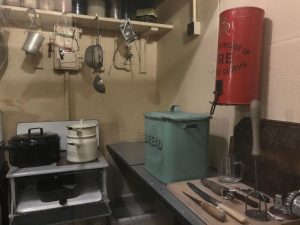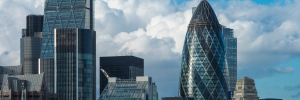3rd May 1951, King George VI declared The Festival Britain open with venues in London and across the country.
It was a national exhibition designed with the aim of promoting a feeling of recovery from both world wars. It was a large-scale demonstration of Britain’s contribution to civilisation; past, present and future in the arts, science and technology, industrial design and the viability of democracy.
Projecting and celebrating a sense of national identity was closely linked to Memory, remembering who the British were, which chimed with a national sense of place, as the rebuilding of Britain led to rethinking a national sense of place. This public declaration of unity, and forward-looking celebration of British achievement was precisely what was needed to reconfigure British identity in the radically altered post-war world.
Although it was a national event, the main focus for the event was a 27 acre area on the South Bank of the Thames in London, between Waterloo Bridge and County Hall. Bombed Victorian buildings and railway sidings which had been left untouched were transformed into a new public space which was intended to showcase the principles of design that would feature in the post-war rebuilding of London and the creation of new towns.
Over 2,000 locations were used with local authorities organising events as well as voluntary bodies. Several key projects and activities were made possible by Exchequer funds.
London locations included the South Bank exhibition site, the Exhibition of Science in South Kensington and the Exhibition of Architecture, Town Planning and Building Research at Lansbury in Poplar.
Upon its completion, the South Bank was made up of 22 free standing pavilions with themes around The Land and The People of Britain. It incorporated multiple levels of buildings, elevated walkways and an open plan feel.
Exhibitions included themes such as The Land of Britain, Sea and Ships, Power and production and The New Schools. The Skylon – an iconic, futuristic vertical cigar-shaped tower held in place by tension cables which gave the impression it was floating in mid-air. There was even a large Dome of Discovery which was at the time the world’ largest dome, being 365ft in diameter. Sound familiar? Today’s O2 (once known as the Millenium Dome) is also 365ft in diameter, the exterior was built to resemble the 1951 Dome of Discovery. The Dome housed exhibitions on the exciting themes of discovery such as Polar regions, the New World, the sea, the sky and outer space and had an entrance fee of five shillings. The festival was similar to a large-scale Tomorrow’s World.
One of the intended outcomes was to cheer everyone up. This public declaration of unity, and forward-looking celebration of British achievement was precisely what was needed to reconfigure British identity in the radically altered post-war world but that didn’t stop the critics. Once opened, critics turned their attention to the aesthetics; the Riverside Restaurant was seen as too futuristic.
The new open space on Southbank had a wide range of places to eat and drink; Restaurants (The Rocket, The Regatta and The Unicorn) , cafes (The Turntable Cafe and The Garden Cafe) and ornamental pools, some illuminated at night.
The overall theme of the Festival of Britain was ‘The Land and the People’ a national display of the interwoven serial story of Britain. This was a huge marketing campaign, not for the festival but for the country. Even with the critics’ comments, the main Festival site on the South Bank managed to attract more than 8 million paying visitors over its five month run.
Upriver from the South Bank, only a few minutes via boat, is Battersea Park. This was home to the fun-fair part of the Festival. This included Pleasure Gardens, walkways suspended in the trees, a water garden, and luxury shopping. Its focus was entertainment rather than education, which seemed to be the core purpose of the other exhibits, and consequently, it was widely enjoyed by large numbers of Festival visitors.
Learn more about the Festival of Britain by listening to our London History Podcast Episode 54: The Festival of Britain
–
Hazel Baker is an award-winning London Tour Guide and qualified CIGA guide who delivers guided walks and private tours in London. View all of Hazel’s walking tours.



